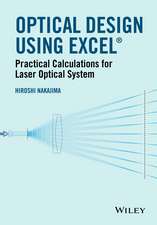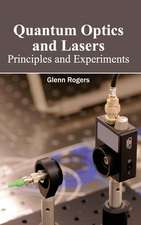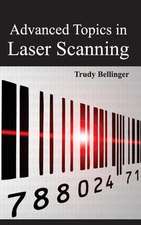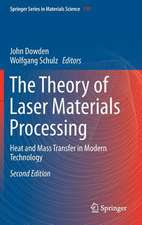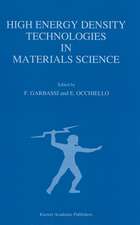The Theory of Laser Materials Processing: Heat and Mass Transfer in Modern Technology: Springer Series in Materials Science, cartea 119
Editat de John Dowdenen Limba Engleză Paperback – 23 noi 2014
Din seria Springer Series in Materials Science
- 18%
 Preț: 1820.22 lei
Preț: 1820.22 lei - 18%
 Preț: 776.09 lei
Preț: 776.09 lei - 24%
 Preț: 689.68 lei
Preț: 689.68 lei - 18%
 Preț: 968.96 lei
Preț: 968.96 lei - 20%
 Preț: 568.94 lei
Preț: 568.94 lei - 18%
 Preț: 953.65 lei
Preț: 953.65 lei - 18%
 Preț: 902.36 lei
Preț: 902.36 lei - 18%
 Preț: 953.65 lei
Preț: 953.65 lei - 20%
 Preț: 948.41 lei
Preț: 948.41 lei - 18%
 Preț: 1143.07 lei
Preț: 1143.07 lei - 18%
 Preț: 1111.53 lei
Preț: 1111.53 lei - 18%
 Preț: 1103.62 lei
Preț: 1103.62 lei - 18%
 Preț: 1225.94 lei
Preț: 1225.94 lei -
 Preț: 473.91 lei
Preț: 473.91 lei - 18%
 Preț: 782.42 lei
Preț: 782.42 lei -
 Preț: 433.47 lei
Preț: 433.47 lei - 18%
 Preț: 1116.40 lei
Preț: 1116.40 lei - 18%
 Preț: 946.24 lei
Preț: 946.24 lei - 18%
 Preț: 945.20 lei
Preț: 945.20 lei - 15%
 Preț: 641.20 lei
Preț: 641.20 lei - 18%
 Preț: 958.56 lei
Preț: 958.56 lei - 18%
 Preț: 1224.36 lei
Preț: 1224.36 lei - 15%
 Preț: 644.82 lei
Preț: 644.82 lei - 24%
 Preț: 833.43 lei
Preț: 833.43 lei - 24%
 Preț: 1060.33 lei
Preț: 1060.33 lei - 18%
 Preț: 964.10 lei
Preț: 964.10 lei - 18%
 Preț: 1224.36 lei
Preț: 1224.36 lei - 18%
 Preț: 1221.20 lei
Preț: 1221.20 lei - 18%
 Preț: 946.87 lei
Preț: 946.87 lei - 18%
 Preț: 1842.31 lei
Preț: 1842.31 lei - 15%
 Preț: 643.34 lei
Preț: 643.34 lei - 18%
 Preț: 1246.32 lei
Preț: 1246.32 lei - 18%
 Preț: 956.81 lei
Preț: 956.81 lei - 18%
 Preț: 953.52 lei
Preț: 953.52 lei - 15%
 Preț: 637.59 lei
Preț: 637.59 lei - 24%
 Preț: 1060.87 lei
Preț: 1060.87 lei
Preț: 1113.09 lei
Preț vechi: 1357.43 lei
-18% Nou
Puncte Express: 1670
Preț estimativ în valută:
213.01€ • 222.11$ • 177.04£
213.01€ • 222.11$ • 177.04£
Carte tipărită la comandă
Livrare economică 20 martie-03 aprilie
Preluare comenzi: 021 569.72.76
Specificații
ISBN-13: 9789400789593
ISBN-10: 9400789599
Pagini: 404
Ilustrații: XIV, 390 p.
Dimensiuni: 155 x 235 x 21 mm
Greutate: 0.57 kg
Ediția:2009
Editura: SPRINGER NETHERLANDS
Colecția Springer
Seria Springer Series in Materials Science
Locul publicării:Dordrecht, Netherlands
ISBN-10: 9400789599
Pagini: 404
Ilustrații: XIV, 390 p.
Dimensiuni: 155 x 235 x 21 mm
Greutate: 0.57 kg
Ediția:2009
Editura: SPRINGER NETHERLANDS
Colecția Springer
Seria Springer Series in Materials Science
Locul publicării:Dordrecht, Netherlands
Public țintă
Professional/practitionerCuprins
Mathematics in Laser Processing.- Simulation of Laser Cutting.- Keyhole Welding: The Solid and Liquid Phases.- Laser Keyhole Welding: The Vapour Phase.- Basic Concepts of Laser Drilling.- Arc Welding and Hybrid Laser-Arc Welding.- Metallurgy of Welding and Hardening.- Laser Cladding.- Laser Forming.- Femtosecond Laser Pulse Interactions with Metals.- Comprehensive Numerical Simulation of Laser Materials Processing.
Textul de pe ultima copertă
The purpose of the book is to show how general principles can be used to obtain insight into laser processes. The principles used may come from fundamental physical theory or from direct observation of experimental results, but an understanding of the general characteristics of the behaviour of a process is essential for intelligent investigation and implementation, whether the approach is experimental, observational, numerical or analytical. The last two have a special value since the associated costs can be relatively low and may be used as a starting point for more expensive techniques. The construction of simple models whose underlying principles are easy to see is therefore of special value, and an understanding of their strengths and limitations is essential.
The applications considered in detail are cutting, keyhole welding, drilling, arc and hybrid laser-arc welding, hardening, cladding, forming and cutting, but the general principles have a very wide application; metallurgical aspects are considered, as are femtosecond interactions with metals. The book begins with a discussion of the mathematical formulation of some relevant classes of physical ideas, and ends with an introduction to comprehensive numerical simulation. Although all the examples considered have the common feature that the source of power is a laser, many of the principles and methods apply to thermal modelling in a variety of different fields and at many different levels of power.
The applications considered in detail are cutting, keyhole welding, drilling, arc and hybrid laser-arc welding, hardening, cladding, forming and cutting, but the general principles have a very wide application; metallurgical aspects are considered, as are femtosecond interactions with metals. The book begins with a discussion of the mathematical formulation of some relevant classes of physical ideas, and ends with an introduction to comprehensive numerical simulation. Although all the examples considered have the common feature that the source of power is a laser, many of the principles and methods apply to thermal modelling in a variety of different fields and at many different levels of power.
Caracteristici
Detailed discussion of currently significant applications of laser processing Theoretical and practical points of view linked Emphasis on underlying physical causes for observed phenomena Quantifiable mathematical reasoning Introduction to techniques for producing sound computational methods


